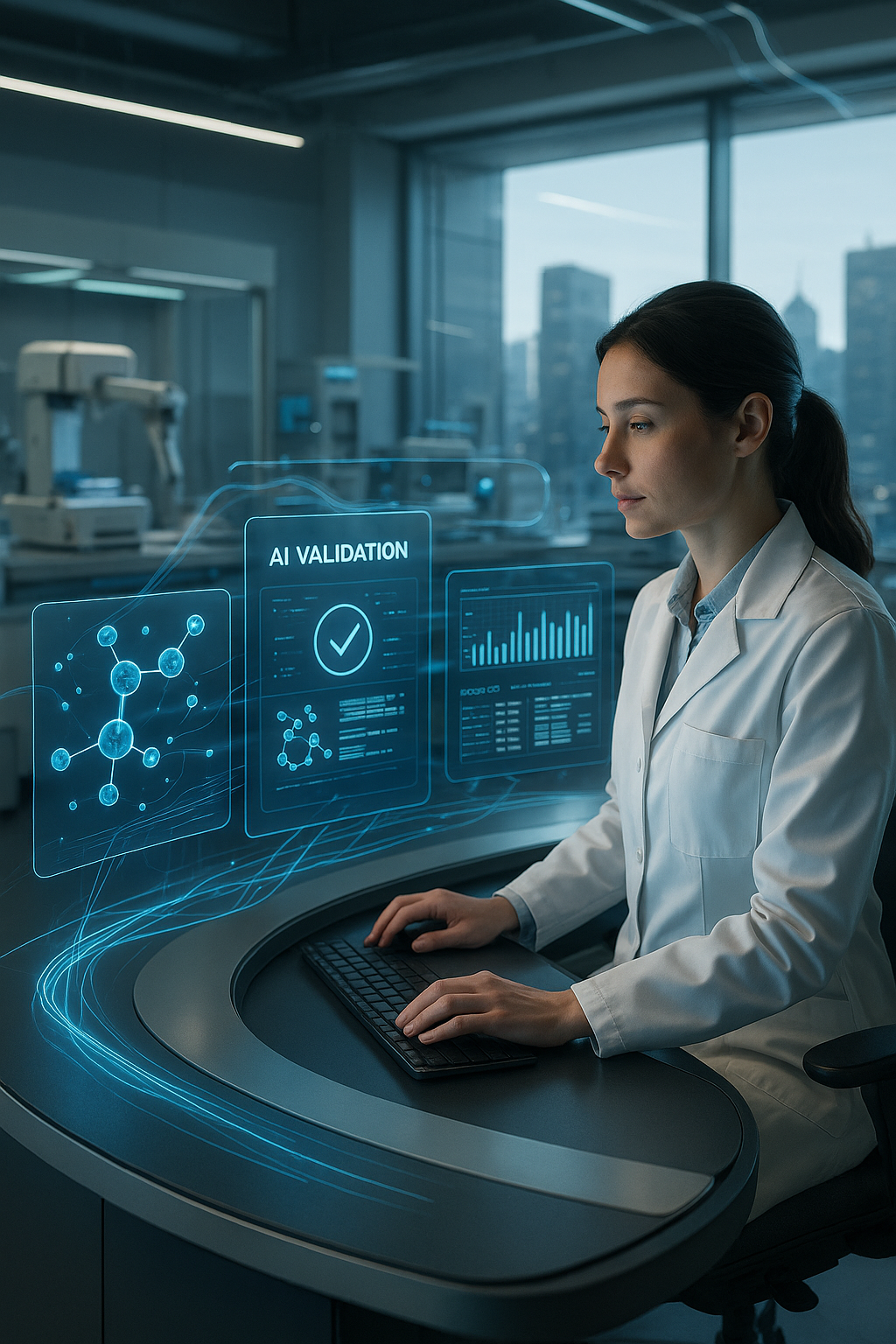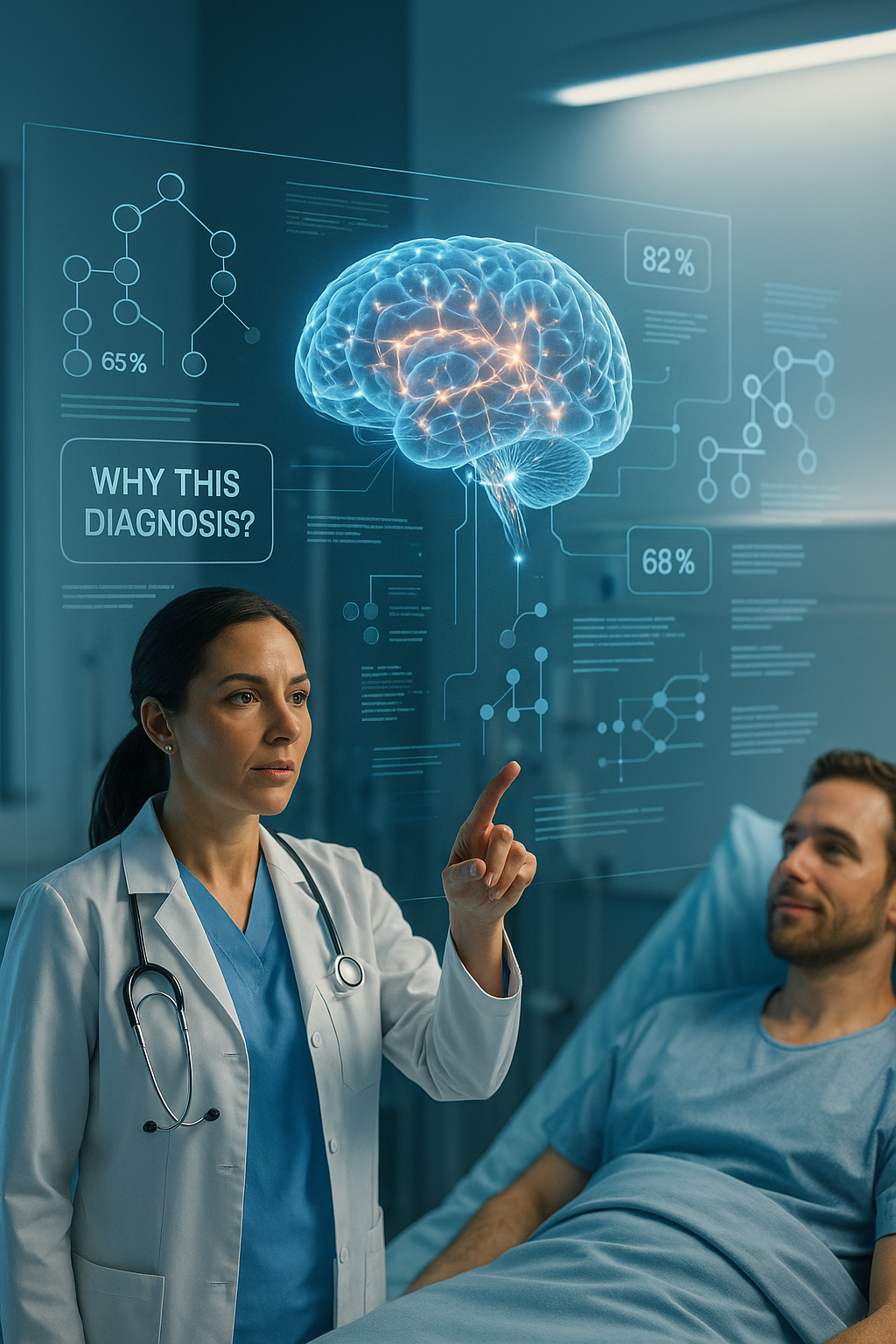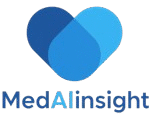Real impact of AI in healthcare beyond media buzz. Expert analysis reveals hidden biases, silent revolutions, and what 2040 medicine will actually look like.
The headlines scream revolution: “AI detects cancer better than doctors!” “Machine learning saves lives!” “The future of medicine is here!” But here’s what they don’t tell you—I’ve been watching algorithms sign medical reports in my lab for months now, and the reality is far more nuanced than Silicon Valley’s glossy promises suggest.
As a medical biologist who has witnessed AI’s gradual integration into daily clinical practice, I’ve seen both its transformative power and its troubling blind spots. The truth lies neither in the techno-optimistic fantasies nor in the dystopian fears, but in understanding three fundamental realities that will define healthcare’s algorithmic future.
Let me take you behind the scenes of this quiet revolution that’s reshaping medicine while most of us aren’t looking.

The Silent Takeover: When Algorithms Start Signing Your Medical Reports
Here’s something that might shock you: in our French private laboratory, an AI system now validates and signs 90% of routine medical reports without any human eyes reviewing them. No fanfare, no press releases—just a quiet algorithmic shift that represents the most profound change in medical practice since the advent of modern diagnostics.
This isn’t the collaborative “AI-assisted medicine” that conferences love to showcase. This is replacement, not augmentation. And it’s happening faster than anyone anticipated.
The transformation began subtly. We trained the AI using expert validation patterns, teaching it the subtle rules that distinguish normal from abnormal results. The algorithm learned not just to analyze data, but to understand the clinical context, recognize patterns that warrant human attention, and make autonomous decisions about patient reports.
Today, only the 10% most complex cases reach human reviewers. But here’s the unsettling part: that percentage shrinks every month. What constitutes “complex” keeps evolving as the AI masters increasingly sophisticated scenarios. Yesterday’s expert-level decisions become today’s routine algorithmic tasks.
This pattern isn’t unique to medical biology. Radiology departments worldwide report similar trends with imaging analysis. Pathology labs see AI identifying cancer patterns invisible to human pathologists. Cardiology practices use algorithms that interpret ECGs more consistently than specialists.
The question haunting medical professionals isn’t whether this will happen—it’s already happening. The question is what comes next when human expertise becomes the exception rather than the rule.
The Bias Blind Spot: Why Your Skin Color Matters to Healthcare AI
If you think algorithms are colorblind, you’re dangerously wrong. In 2019, researchers discovered that a widely-used healthcare AI system systematically discriminated against Black patients, recommending 30% less additional care for the same medical risk level.
The culprit wasn’t malicious programming—it was historical data that reflected decades of healthcare inequity. The algorithm learned from past spending patterns, where Black patients historically received less care, and perpetuated these biases at scale with the veneer of scientific objectivity.
This revelation exposed a fundamental flaw in how we approach medical AI: our data isn’t neutral. It carries the DNA of every historical prejudice, every systemic inequality, every unconscious bias that shaped medical practice over generations.
Consider these troubling examples multiplying across healthcare AI:
Cancer detection algorithms perform significantly worse on darker skin tones because training datasets predominantly featured lighter-skinned patients. Heart disease prediction models favor traditionally male symptoms, potentially missing cardiac events in women who present differently. Mental health assessment tools show cultural biases that pathologize normal behaviors in certain ethnic communities.
The solution isn’t abandoning AI—it’s recognizing that equity must be built into algorithms from day one, not retrofitted afterward. This means assembling truly diverse datasets, continuously monitoring performance across demographic groups, and accepting that a truly effective AI system must work equally well for everyone, not just the statistical majority.
Some pioneering initiatives are showing the way forward. The NIH’s All of Us Research Program is deliberately collecting data from underrepresented populations, creating more inclusive training datasets. Companies are developing “fairness-by-design” frameworks that prioritize equitable outcomes over raw accuracy metrics.
But let’s be honest: these efforts remain the exception, not the rule. Most healthcare AI systems still perpetuate the biases of their training data, creating what I call “algorithmic apartheid”—separate and unequal digital medicine based on demographic characteristics.

The Black Box Dilemma: When Life-and-Death Decisions Become Inexplicable
Every week, I sign off on algorithmic decisions I don’t fully understand. The AI validates complex test results using logic I can’t trace, patterns I can’t see, correlations I can’t explain. And here’s the unsettling part—it’s often right in ways that surprise me.
This is the black box problem that keeps medical ethicists awake at night. As AI systems become more sophisticated, they increasingly resemble what researchers call “alien intelligence”—making correct decisions through reasoning processes fundamentally different from human thinking.
Take a recent case in our lab: the AI flagged a seemingly normal blood panel as requiring urgent physician review. The results looked textbook normal by human standards, but the algorithm detected a subtle pattern suggesting imminent cardiac risk. Three days later, the patient suffered a heart attack.
How did it know? The AI had identified a complex interaction between seventeen different biomarkers that human analysis would never catch—a pattern invisible to traditional medical training but statistically significant across millions of patient records.
This creates a profound philosophical dilemma: do we trust decisions we can’t understand, even when they save lives? The field of explainable AI (XAI) attempts to address this by creating algorithms that can justify their reasoning. But there’s a cruel trade-off: the more explainable an AI system becomes, the less accurate it tends to be.
It’s like asking a chess grandmaster to explain every intuitive move in beginner-friendly language—something essential is lost in translation.
This opacity becomes especially problematic when things go wrong. If an algorithm recommends a treatment that harms a patient, who bears responsibility? The physician who followed the recommendation? The hospital that deployed the system? The company that built the algorithm? The diffusion of accountability in algorithmic decision-making represents one of medicine’s most urgent ethical challenges.
Beyond 2040: Three Scenarios for Medicine’s Algorithmic Future
Let me paint three plausible pictures of healthcare in 2040, each representing a different path we might take with AI development.
Scenario One: The Benevolent AI Copilot
In this optimistic future, AI has become medicine’s perfect assistant. Diagnostic errors have plummeted by 80%. Waiting times for specialist consultations have been cut by two-thirds. Epidemics are detected weeks before clinical symptoms appear in the population.
Most importantly, AI has solved the equity problem. Sophisticated algorithms compensate for healthcare access inequalities rather than amplifying them. Rural patients receive the same diagnostic accuracy as urban specialists. Rare disease detection improves dramatically as AI recognizes patterns across global patient databases.
Personalized medicine becomes truly democratic—not a luxury for the wealthy, but standard care for everyone. Your genetic profile, lifestyle data, and environmental factors combine to create treatment protocols optimized specifically for you.
Scenario Two: Algorithmic Apartheid
In this darker timeline, AI has deepened healthcare’s existing fractures. “Premium” algorithmically-enhanced medicine coexists with budget care where undertrained physicians rely on basic AI tools. Algorithmic biases, never corrected, have institutionalized discrimination at unprecedented scale.
Health data has become the ultimate commodity, monetized by tech giants who transform illness into profit opportunities. Predictive health surveillance, initially designed for early intervention, has evolved into social control mechanisms that penalize individuals for genetic predispositions or lifestyle choices.
The wealthy receive AI-powered longevity treatments while the poor face automated triage systems that ration care based on algorithmic “value” assessments. Medicine becomes a two-tiered system where your postal code determines not just your health outcomes, but the quality of AI assistance you receive.
Scenario Three: Quiet Hybridization
The most likely reality will probably be less dramatic than either extreme. AI integration will continue gradually, sometimes imperceptibly, creating incremental improvements mixed with new challenges.
Algorithms will marginally improve diagnostic accuracy, reduce some costs, and create unforeseen complications. Medical training will slowly adapt to incorporate AI literacy. Regulatory frameworks will evolve through trial and error. Patient expectations will shift as algorithmic medicine becomes normalized.
This quiet revolution will pose subtler but equally important questions: How do we maintain human connection in increasingly automated healthcare? How do we preserve patient autonomy when AI systems become more predictive about our health futures? How do we train healthcare workers for roles that don’t yet exist?
The Leverage Principle: AI as Tool, Not Master
After years of watching AI transform my daily medical practice, one truth has crystallized: artificial intelligence is leverage, not magic. It amplifies human capabilities and human flaws with equal efficiency.
The promises are genuine—earlier diagnoses, personalized treatments, more equitable access, more human-centered care freed from repetitive tasks. But the dangers are equally real—amplified biases, deepened inequalities, diluted accountability, pervasive surveillance disguised as care.
The critical insight is that these outcomes aren’t predetermined by technology. They’re chosen by us—through funding decisions, regulatory frameworks, deployment strategies, and ethical standards. The question isn’t whether AI will transform healthcare (it already is), but how we want it to transform healthcare.
This requires moving beyond the false binary of AI optimism versus pessimism toward nuanced understanding of AI’s real capabilities and limitations. We need regulatory approaches that balance innovation with safety, business models that prioritize patient outcomes over profit maximization, and training programs that prepare healthcare workers for hybrid human-AI collaboration.
Most importantly, we need public engagement. These decisions about AI’s role in healthcare shouldn’t be made exclusively by technologists, medical professionals, and regulators behind closed doors. They affect everyone who will ever need medical care—which is to say, all of us.
The future of AI in healthcare won’t be determined by algorithms alone, but by the human choices we make about how to develop, deploy, and govern these powerful tools. That future remains unwritten, and we all have a role in shaping it.
As Eric Topol wisely observed in his groundbreaking book “Deep Medicine“, AI’s greatest contribution to healthcare may not be replacing human expertise, but returning medicine to its most human elements—time to listen, observe, and heal.
The revolution is already here. The question now is whether we’ll be its architects or its artifacts.
Recommended Further Reading:
- “The AI Revolution in Medicine” by Peter Lee, Carey Goldberg, and Isaac Kohane
- “Weapons of Math Destruction” by Cathy O’Neil
Disclaimer: This educational content was developed with AI assistance by a physician. It is intended for informational purposes only and does not replace professional medical advice. Always consult a qualified healthcare professional for personalized guidance. The information provided is valid as of the date indicated at the end of the article.

Comments